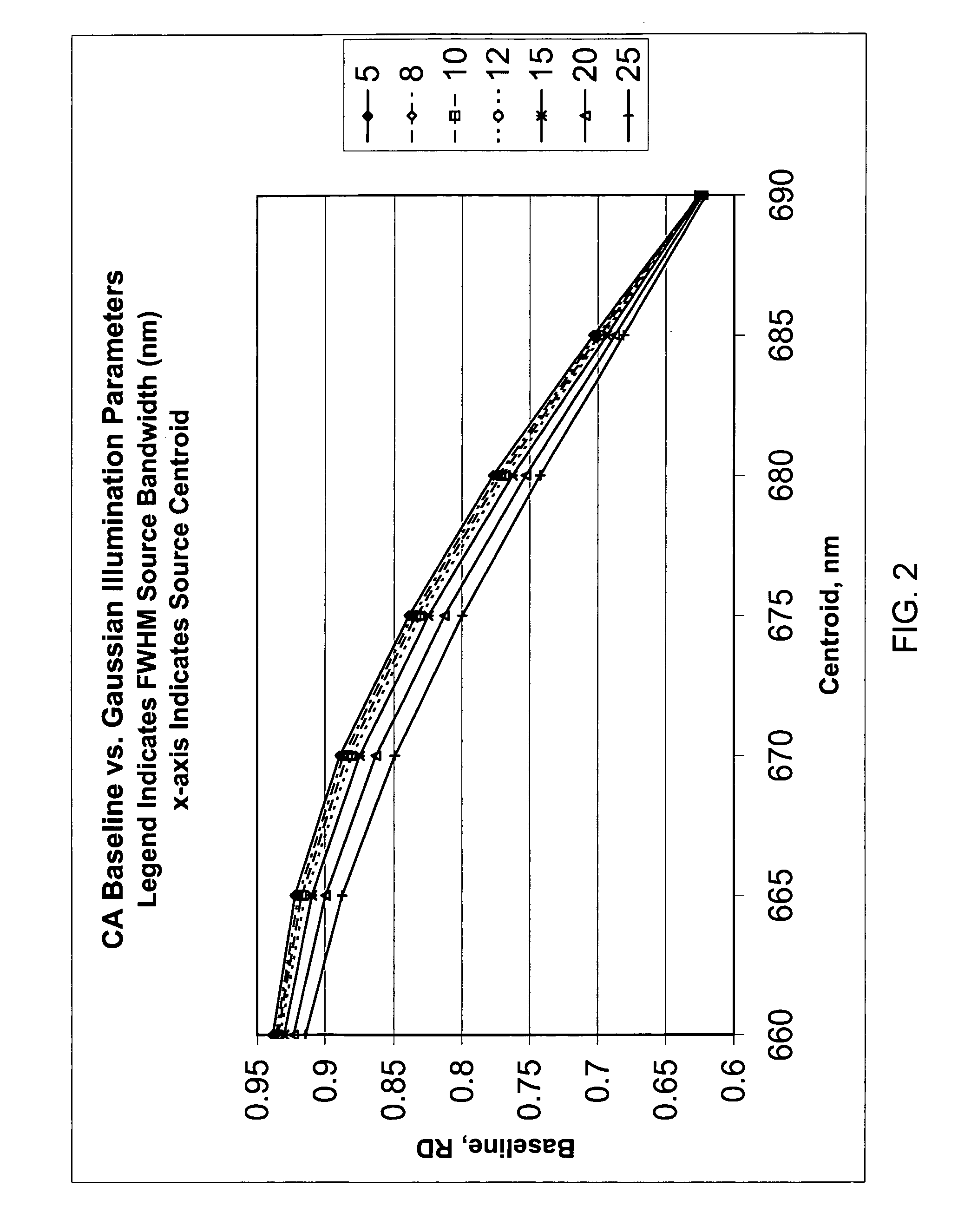Method for calibrating clinical chemistry instruments
a clinical chemistry and instrument technology, applied in the direction of instruments, liquid/fluent solid measurement, material analysis, etc., can solve the problems of instrument-to-instrument variability in sensitivity, not the general case, and the inability to hold centroids to such close tolerances
- Summary
- Abstract
- Description
- Claims
- Application Information
AI Technical Summary
Benefits of technology
Problems solved by technology
Method used
Image
Examples
Embodiment Construction
[0039]In accordance with one form of the present invention, a method for calibrating a clinical chemistry instrument may be generally described as measuring the emission spectrum for previously calibrated (that is, intensity-balanced) light emitting diodes (LEDs) used in the optical system of the instrument, measuring the sensitivity spectrum, if such is necessary, of the reflection or transmission sensor (i.e., light detector) used in the optical system of the instrument, and using this information to set one or more corrections having an intercept value (offset), a slope value or higher-order terms, again if such are necessary, to compensate for instrument-to-instrument centroid wavelength and band shape characteristic variability. The emission wavelengths of the LEDs may be measured individually in order to determine if they meet acceptable criteria, or measurements may be taken of two or more LEDs of the same wavelength that are energized to simultaneously emit light. What is me...
PUM
| Property | Measurement | Unit |
|---|---|---|
| width at half (band | aaaaa | aaaaa |
| centroid wavelength | aaaaa | aaaaa |
| centroid wavelength | aaaaa | aaaaa |
Abstract
Description
Claims
Application Information
 Login to View More
Login to View More - R&D
- Intellectual Property
- Life Sciences
- Materials
- Tech Scout
- Unparalleled Data Quality
- Higher Quality Content
- 60% Fewer Hallucinations
Browse by: Latest US Patents, China's latest patents, Technical Efficacy Thesaurus, Application Domain, Technology Topic, Popular Technical Reports.
© 2025 PatSnap. All rights reserved.Legal|Privacy policy|Modern Slavery Act Transparency Statement|Sitemap|About US| Contact US: help@patsnap.com



